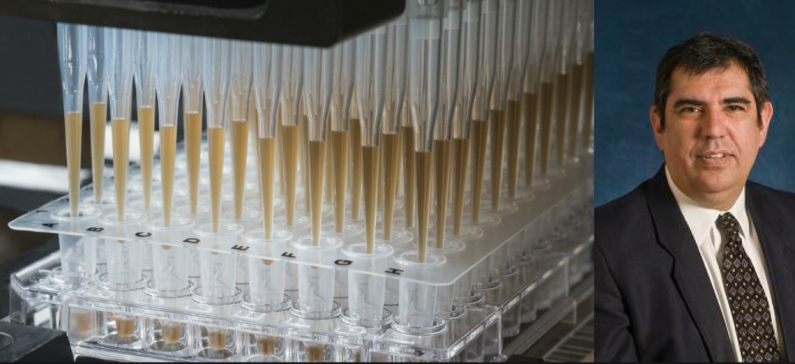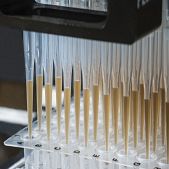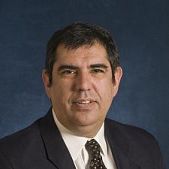
Greek researcher develops blood test to detect multiple early-stage cancers
An international team led by a Greek researcher from Johns Hopkins University has developed a test that analyzes circulating DNA and proteins for the detection and possible localization of multiple early-stage cancer types.
In a study published this week in Science, the researchers reported a multi-analyte blood test that can detect eight common cancer types by assessing the levels of circulating proteins and mutations in circulating tumor DNA (ctDNA). The eight cancer types that the study examines accounted for an estimated 60 percent of cancer deaths in the US in 2017.
The team applied the test, called CancerSEEK, to 1,005 patients with non-metastatic, clinically detected cancers in specific organs, including the ovaries, liver, stomach, pancreas, esophagus, colorectum, lungs, and breasts. In addition, the team studied 850 healthy control individuals with no history of cancer.
CancerSEEK tests were positive in a median of 70 percent of eight cancer types. The sensitivities ranged from 69 percent to 98 percent for five cancer types, including ovary, liver, stomach, pancreas, and esophagus.
Previous studies have demonstrated that the maximum sensitivity of plasma DNA-based tests, known as liquid biopsies, is limited for localized cancers. Another study indicated that integrating four protein biomarkers with a genetic biomarker (KRAS) could improve sensitivity in order to detect pancreatic cancers.
While designing CancerSEEK, the team dealt with four competing issues. First, the test needed to examine an appropriate number of bases to in order to detect a large number of cancers. Each queried base also needed to be sequenced thousands of times to detect low-prevalence mutations. However, they also needed to limit the number of bases queried because the more bases queried, the more likely that artifactual mutations would be identified, reducing the signal-to-noise ratio. In addition, the test needed to be inexpensive and amenable to high throughput, both of which limit the amount of sequencing that can be performed.
To solve these issues, the researchers searched for the minimum number of short amplicons that would allow them to detect at least one driver gene mutation in each of the eight tumor types evaluated. They designed a 61-amplicon panel, with each amplicon examining an average of 33 base pairs within one of 16 genes.
The team then developed two approaches to detect rare mutations they believe would be present in ctDNA. First they applied the Safe-Sequencing System (Safe-SeqS), a method previously developed by JHU scientists including Nickolas Papadopoulos, Kenneth Kinzler, and Bert Vogelstein, all of whom are authors on the new study. Safe-SeqS uses a barcoding strategy to distinguish amplification or sequencing errors from real variants, enabling the team to make efficient use of the small amount of cell-free DNA present in plasma.
In addition, the researchers performed a partitioning strategy on the plasma samples, which decreases the number of DNA molecules per well but effectively increases the fraction of each mutant molecule per well, making the mutants easier to detect. The team divided the total DNA recovered from the plasma into multiple aliquots and performed independent assays on each replicate.
Dividing the sample “give[s] the cells a chance to decrease the noise, and allows us to analyze independent wells,” explained Papadopoulos, one of several corresponding authors on the study. “This partitioning [strategy] allowed us to improve the signal-to-noise ratio, from 2:1000 to 1:100,” and identify target mutations at a lower prevalence, he added. After amplifying and purifying the DNA from these individual wells, they sequenced the amplification products on an Illumina MiSeq or HiSeq 4000 instrument.
The second portion of CancerSEEK examines protein biomarkers, as previous studies have demonstrated that a majority of early-stage tumors do not release traceable amounts of ctDNA. Running preliminary studies on protein biomarkers on plasma samples of cancer and healthy patients, the team noted eight proteins that were useful for discriminating cancer patients from healthy controls on a single immunoassay platform, Bio-Rad’s Bio-Plex 200 platform running Luminex bead-based immunoassays.
The features most important to the CancerSEEK algorithm included the presence of a ctDNA mutation followed by an increase in the levels of cancer antigen 125, carcinoembryonic antigen cancer antigen 19-9, prolactin, hepatocyte growth factor, osteopontin, myeloperoxidase, and tissue inhibitor of metalloproteinases 1.
According to the paper, the median sensitivity of CancerSEEK among the eight cancer types evaluated was 70 percent, ranging from 98 percent in ovarian cancers to 33 percent in breast cancers. At the median sensitivity, specificity was greater than 99 percent, with only seven of the 812 healthy controls scoring as false positive.
At 99 percent specificity, the median sensitivity among patients with Stage II, the most common stage evaluated, was 73 percent, with 78 percent sensitivity for Stage III patients. For Stage I, the earliest stage of cancer, however, the median sensitivity dropped down to 43 percent.
Despite this low median sensitivity for early-stage cancer, Papadopoulos argued that CancerSEEK will have a long-term impact and will overall reduce the number of cancer deaths. He also emphasized that this is the first study that has tested the CancerSEEK technology on a such a massive scale. It’s also notable that the team used the test to screen for five out of eight common cancers that previously lacked any forms of screening procedure: the ovary, liver, stomach, pancreas, and esophagus.
The researchers also acknowledged limitations of the study, such as using only healthy individuals for control samples. In true cancer screening settings, some patients may have inflammatory or other diseases that could lead to a higher proportion of false positive results than recorded in the study. However, Papadopoulos said that he believes the test will ultimately be able to distinguish between patients with cancer and other inflammatory diseases.
In addition, the proportion of cancers of each type in the group was “purposefully not representative of those in the US as a whole because [the team] wanted to evaluate at least 50 examples of each cancer type,” the researchers wrote.
When predicted for actual occurrence in the US, the team estimated the “sensitivity of CancerSEEK to be 55 percent among all eight cancer types.”
On behalf of the study’s coauthors Johns Hopkins has filed a patent application that covers aspects of Safe-SeqS as well as the multi-analyte approached described in the paper.
At this time, Papadopoulos declined to comment on potential commercialization of the CancerSEEK technology. However, the study estimates that the test could cost less than $500, which “is comparable [to] or lower than other screening tests for single cancers, such as colonoscopy.”









